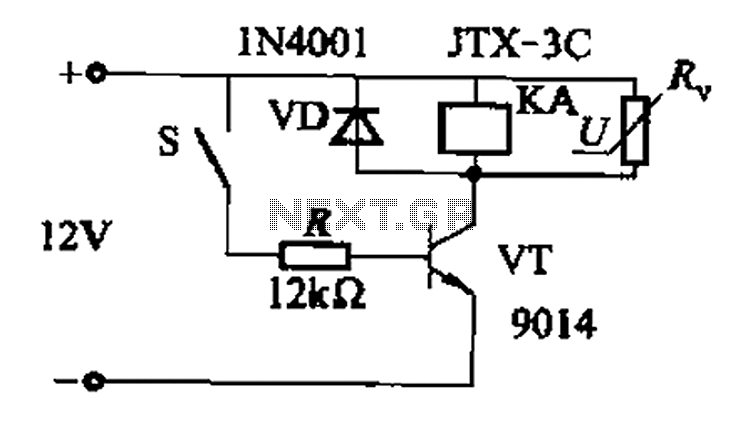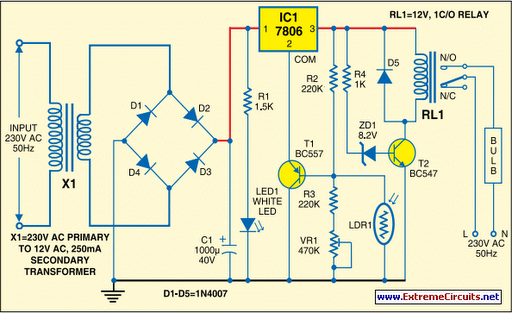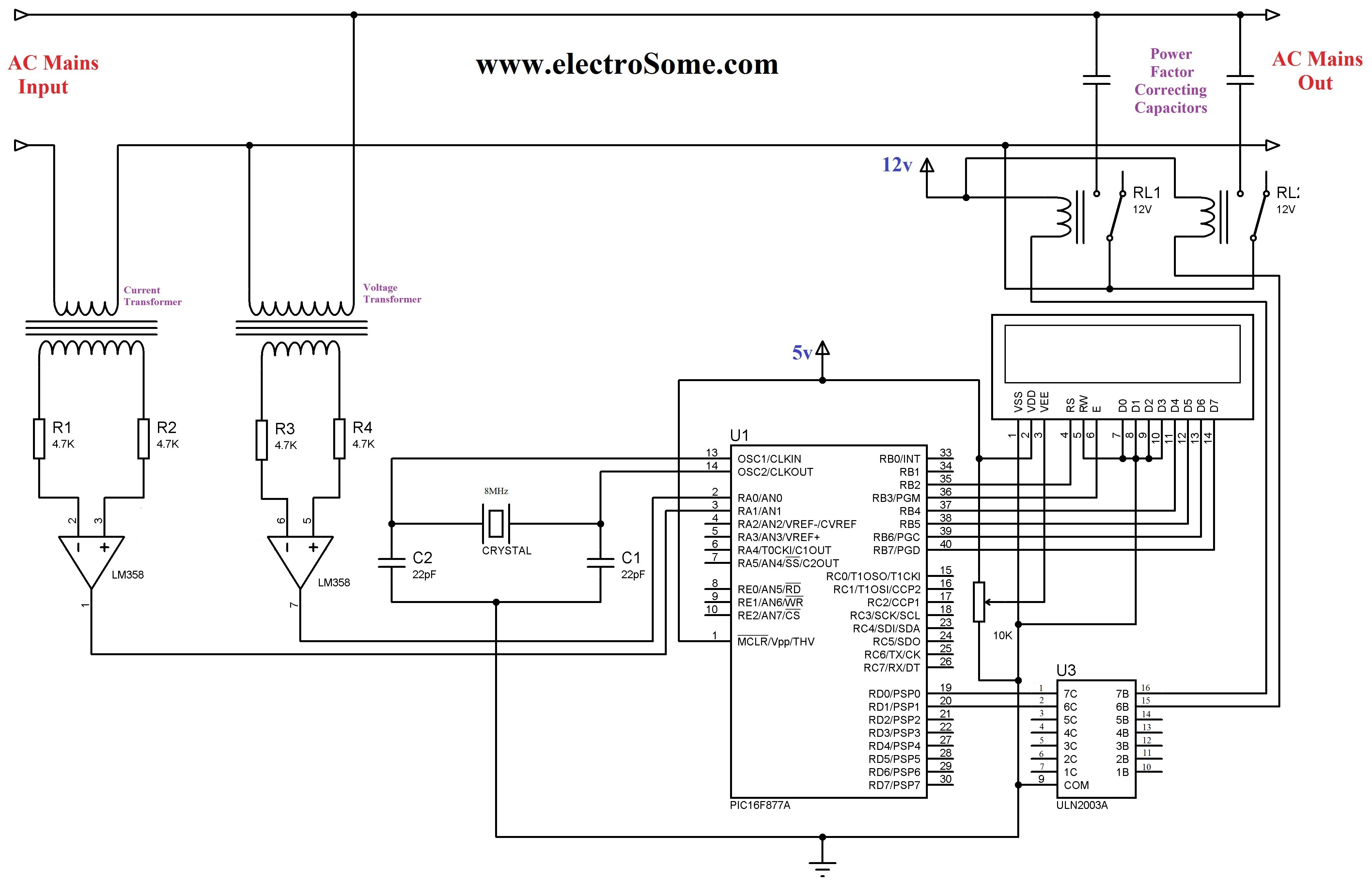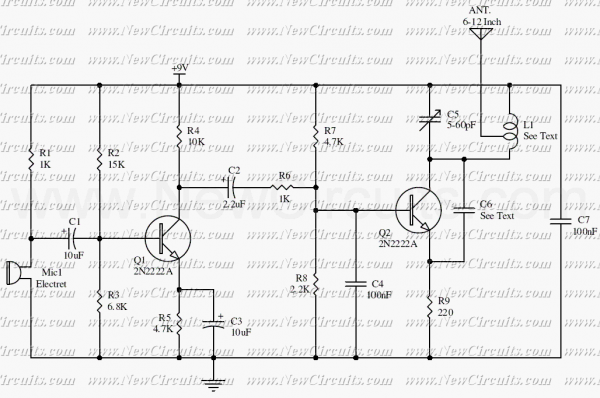
2N2222 Transistor For Three Phase Auto Changer
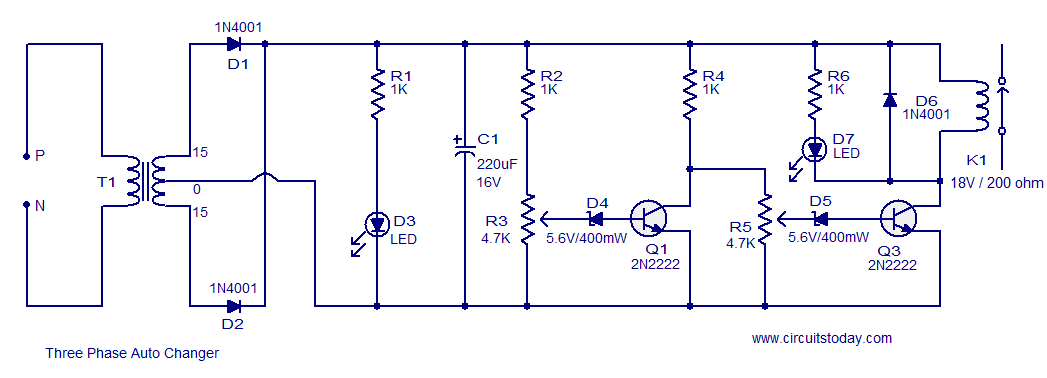
The following circuit illustrates a Three Phase Auto Changer Circuit Diagram. This circuit utilizes the 2N2222 transistor. Features include a transformer.
The Three Phase Auto Changer Circuit is designed to automatically switch between different phases in a three-phase power system, ensuring balanced load distribution and enhanced operational efficiency. The core component of this circuit is the 2N2222 transistor, a versatile NPN bipolar junction transistor widely used for switching applications due to its reliability and performance characteristics.
The circuit typically consists of a transformer that steps down the voltage to a manageable level suitable for the control circuitry. The transformer is essential for isolating the control circuit from the high voltage side, providing safety and stability. The primary winding of the transformer is connected to the three-phase supply, while the secondary winding provides the necessary voltage to drive the control logic.
The 2N2222 transistor acts as a switching element in this circuit. It is configured in a manner that allows it to control the flow of current to the load based on the phase input it receives. When a specific phase is detected, the transistor is turned on, allowing current to flow through the load connected to that phase. This automatic switching mechanism helps in maintaining the operational efficiency of three-phase systems by optimizing the load on each phase.
Additional components may include resistors and capacitors that are strategically placed to filter noise and stabilize the operation of the transistor. These components ensure that the circuit operates smoothly without interference from voltage spikes or fluctuations in the supply.
Overall, the Three Phase Auto Changer Circuit using the 2N2222 transistor is an effective solution for managing three-phase power systems, facilitating automatic phase switching, and improving load management in various industrial and commercial applications.The following circuit shows about Three Phase Auto Changer Circuit Diagram. This circuit using the 2N2222 Transistor. Features: transformer with .. 🔗 External reference
The Three Phase Auto Changer Circuit is designed to automatically switch between different phases in a three-phase power system, ensuring balanced load distribution and enhanced operational efficiency. The core component of this circuit is the 2N2222 transistor, a versatile NPN bipolar junction transistor widely used for switching applications due to its reliability and performance characteristics.
The circuit typically consists of a transformer that steps down the voltage to a manageable level suitable for the control circuitry. The transformer is essential for isolating the control circuit from the high voltage side, providing safety and stability. The primary winding of the transformer is connected to the three-phase supply, while the secondary winding provides the necessary voltage to drive the control logic.
The 2N2222 transistor acts as a switching element in this circuit. It is configured in a manner that allows it to control the flow of current to the load based on the phase input it receives. When a specific phase is detected, the transistor is turned on, allowing current to flow through the load connected to that phase. This automatic switching mechanism helps in maintaining the operational efficiency of three-phase systems by optimizing the load on each phase.
Additional components may include resistors and capacitors that are strategically placed to filter noise and stabilize the operation of the transistor. These components ensure that the circuit operates smoothly without interference from voltage spikes or fluctuations in the supply.
Overall, the Three Phase Auto Changer Circuit using the 2N2222 transistor is an effective solution for managing three-phase power systems, facilitating automatic phase switching, and improving load management in various industrial and commercial applications.The following circuit shows about Three Phase Auto Changer Circuit Diagram. This circuit using the 2N2222 Transistor. Features: transformer with .. 🔗 External reference
